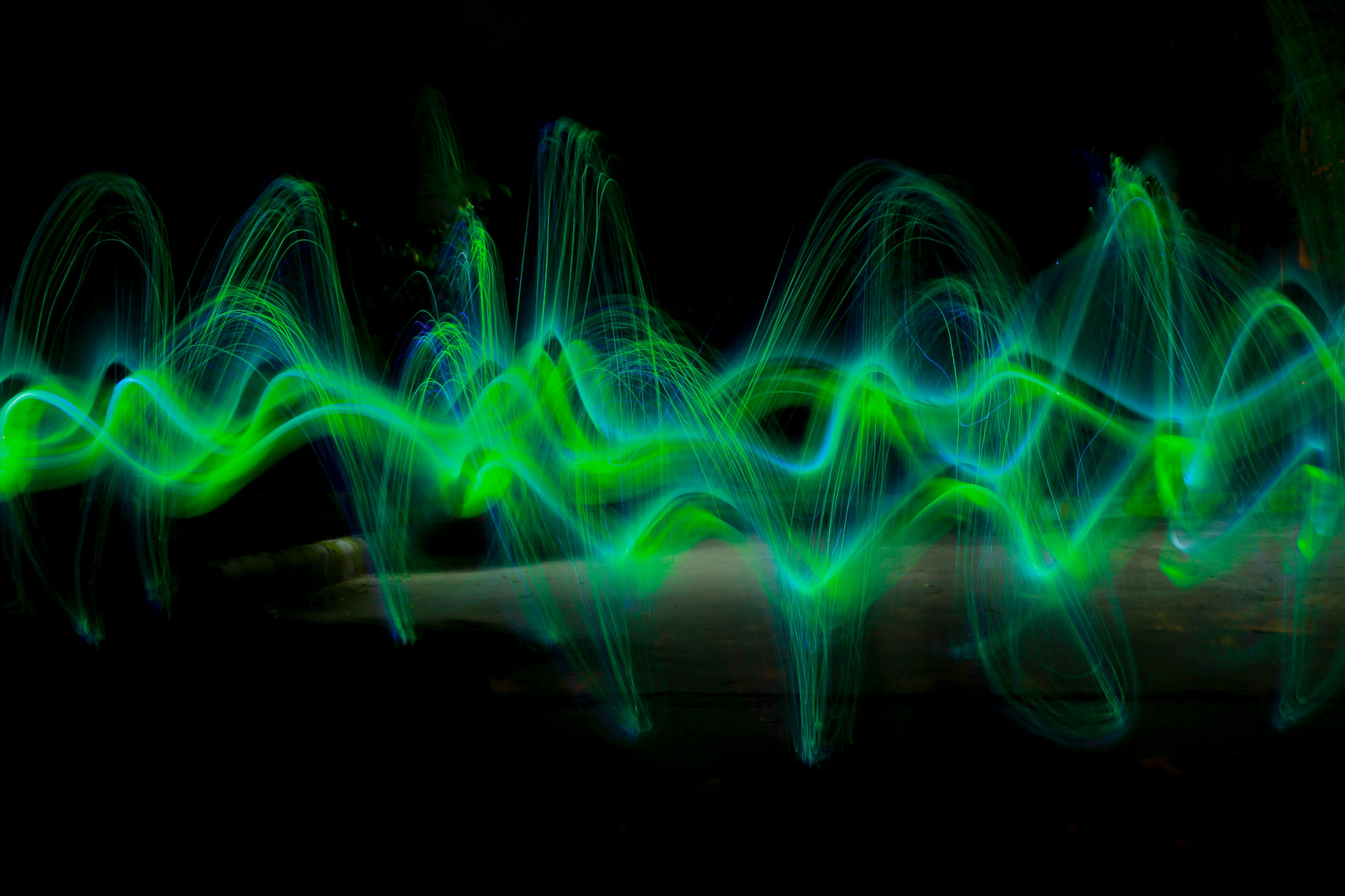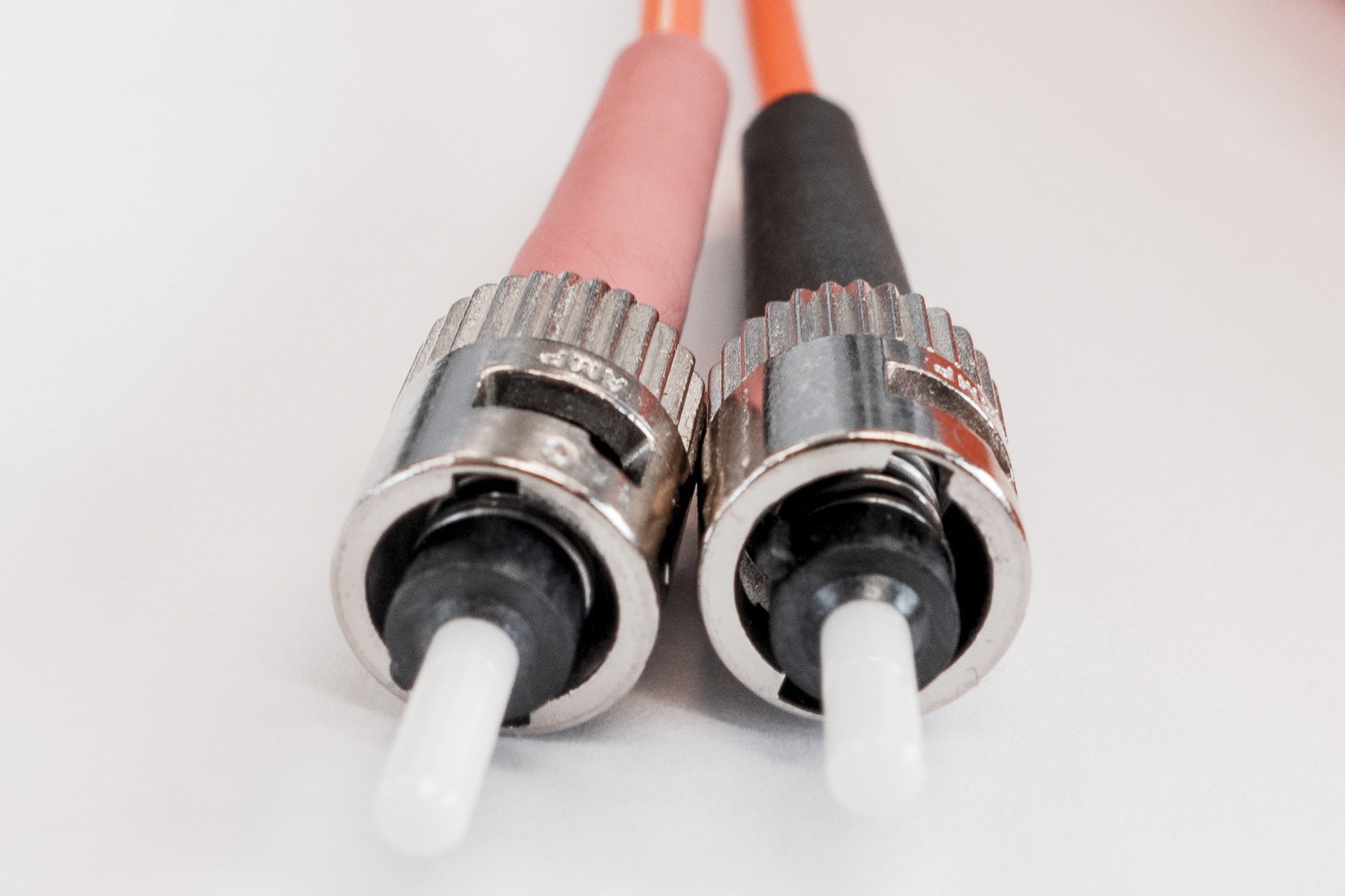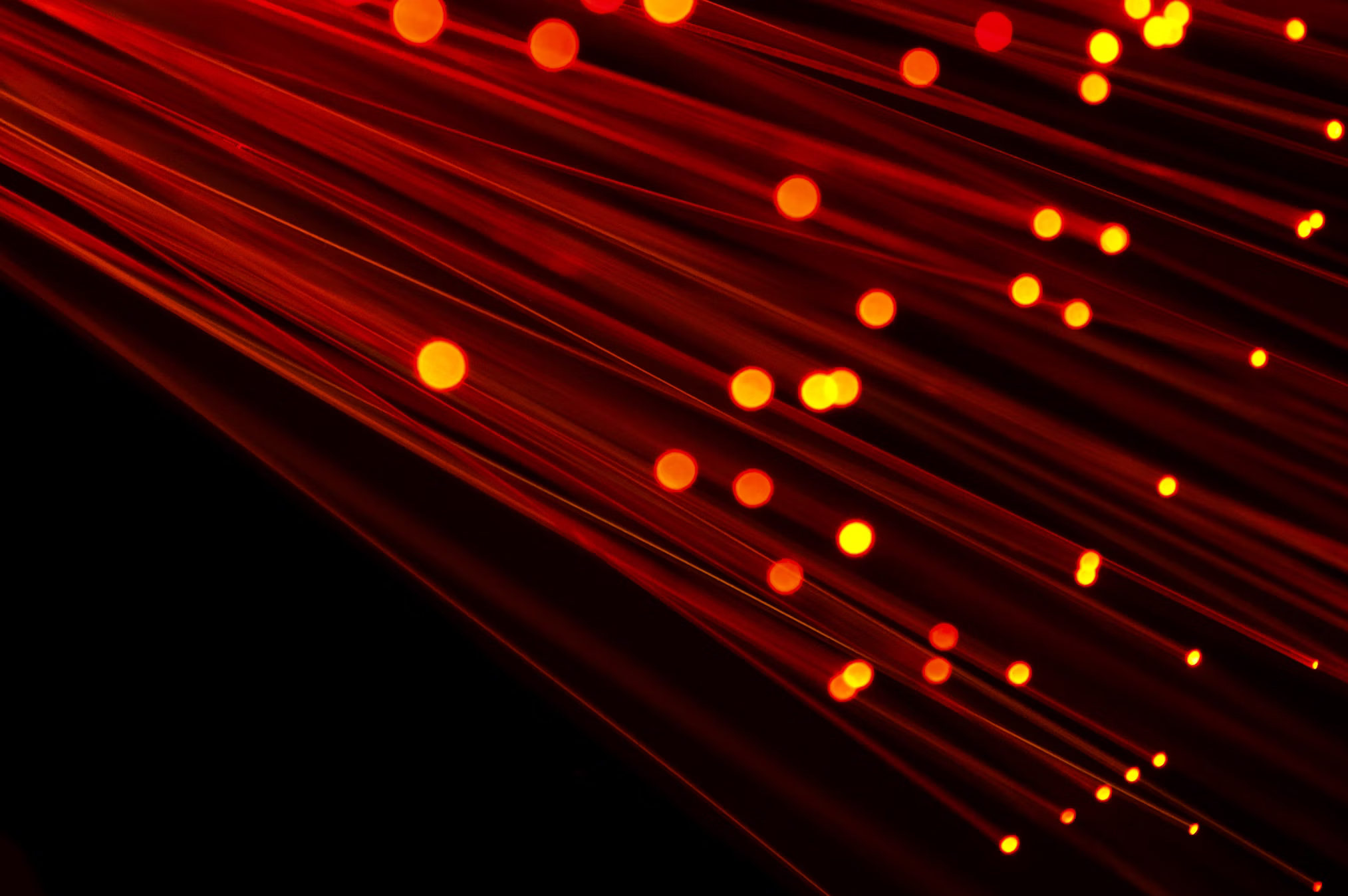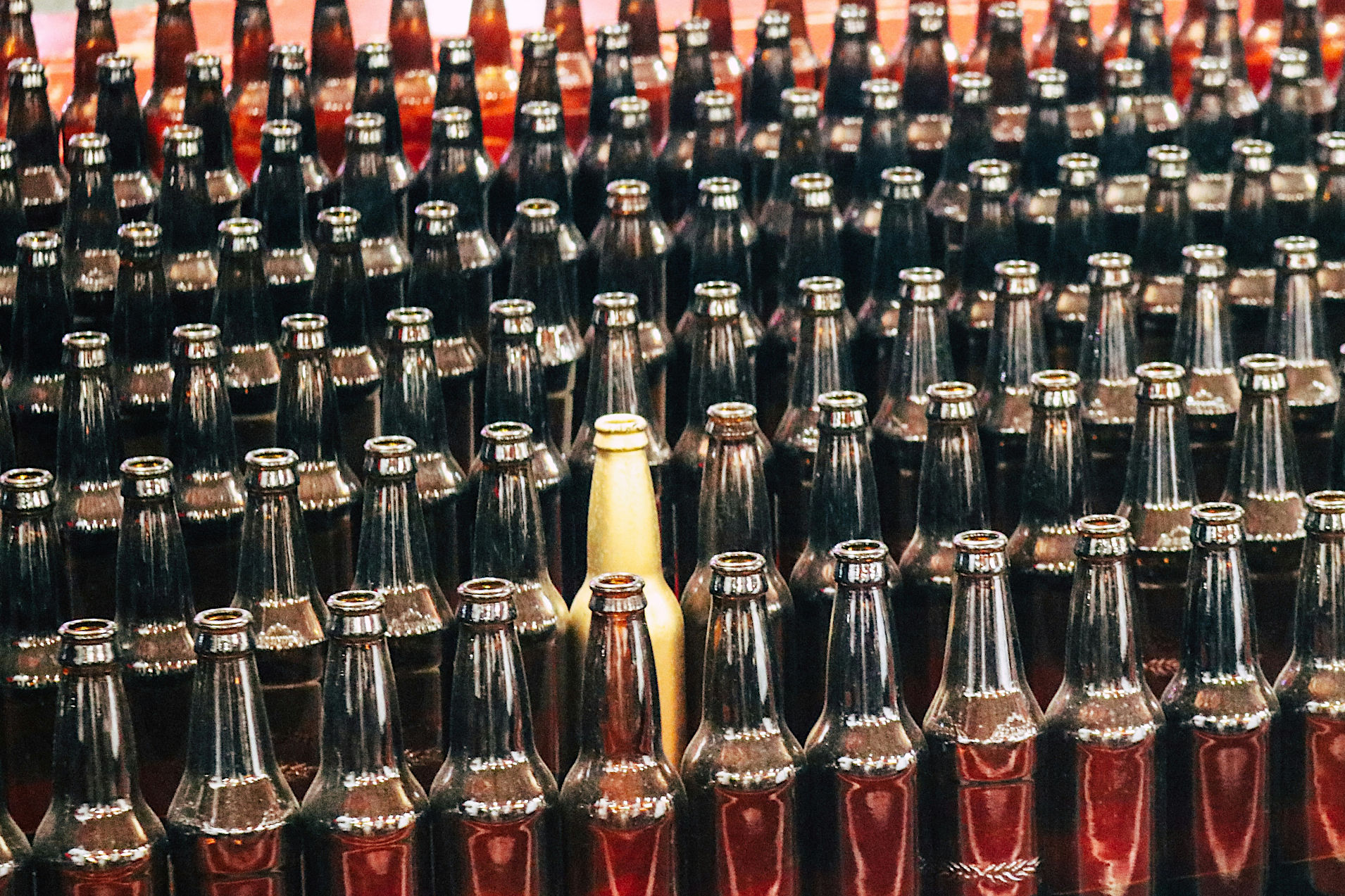The influence of blue light on human sleep behaviour
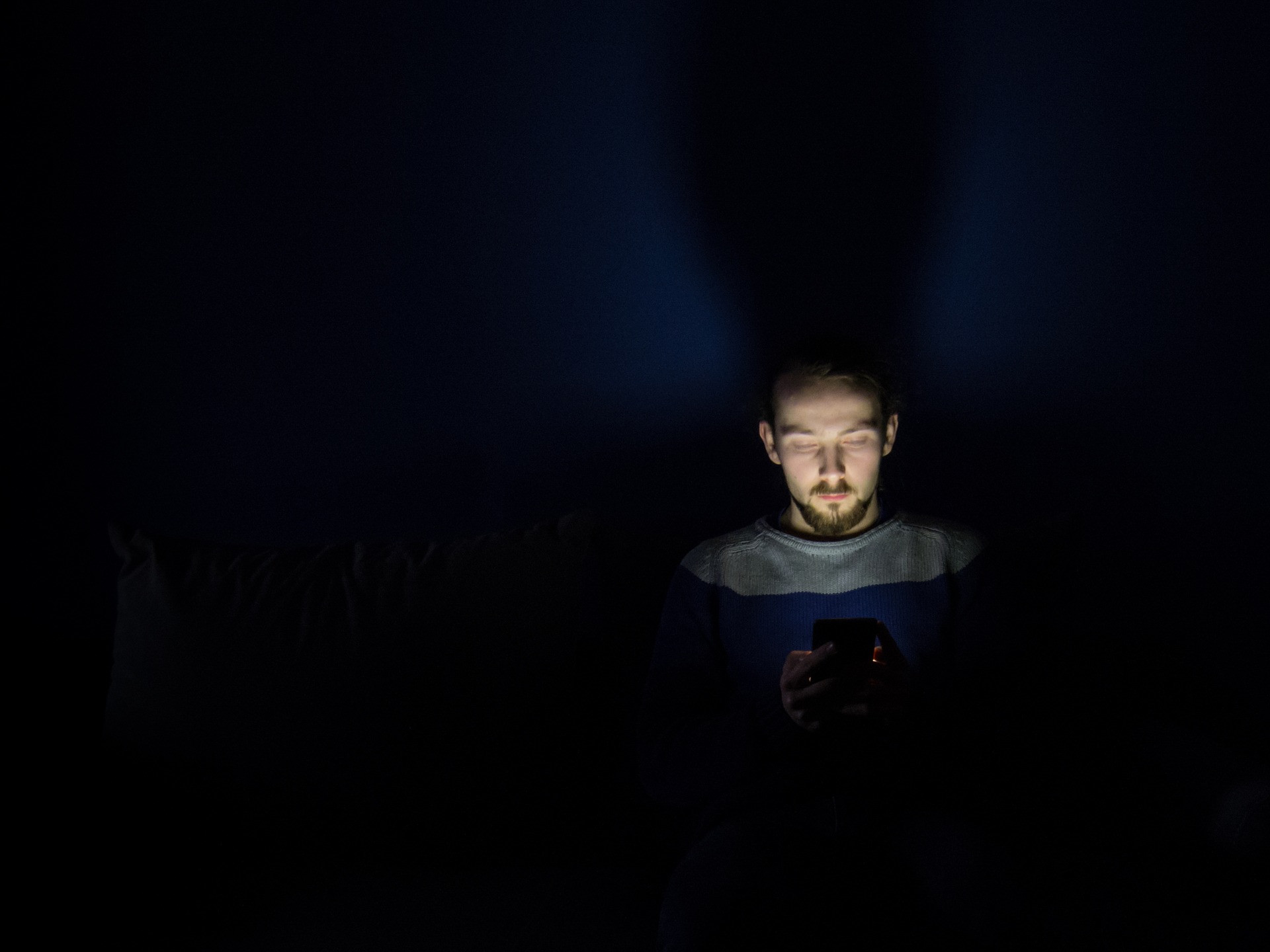
Complaints about sleep disorders have increased significantly over the past 50 years. About 35% of the workforce in Germany complain of problems falling asleep or staying asleep. And about 20% of children wake up several times at night and suffer from tiredness and exhaustion in the morning. At the same time, 90% of people currently use electronic devices such as smartphones, tablets, e-book readers or laptops until late in the evening. Since these devices emit a high proportion of short-wave light, blue light as a possible cause has come into focus of science. Research groups around the world have been studying the effects of blue light on the organism since 2012. In addition, new technologies are constantly being developed to reduce the proportion of blue light emitted by light sources and to adapt the wavelength ratio to daylight.
What is blue light and how is it perceived?
Light is composed of different wavelengths. What we perceive as white light is a bundle of electromagnetic rays of many different wavelengths. If white light is guided through a prism, the spectrum of the light - that is, the range of different wavelengths - can be made visible. Depending on the wavelength, the individual beams are refracted at different angles and therefore continue to drift in slightly different directions after emerging from the prism. The wavelength range visible to the human eye ranges from approx. 400nm to 720nm - it is not entirely by chance that this is also the spectral range in which the radiation from our sun is most intense.
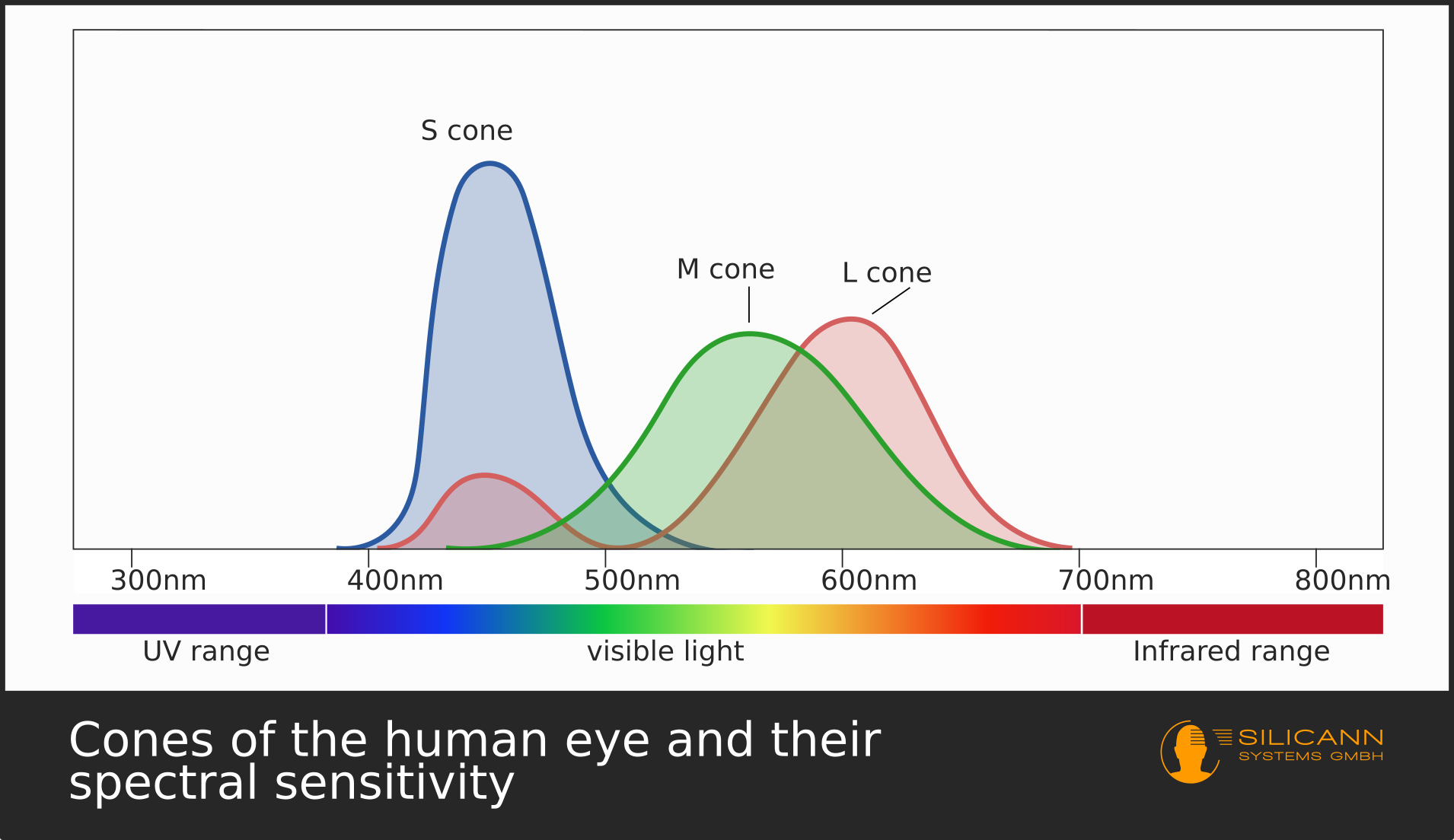
Artificial light sources beyond sun and fire have been around for about 120 years. Some of them vary significantly in their spectral structure and practically all differ from the profile of solar radiation. While traditional light bulbs have a higher proportion of red light and infrared than the sun, many more energy-efficient lamps or LEDs have a profile with a comparatively high proportion of blue. The peak here is between 420nm and 480nm (blue light). By now there also exist so-called warm white LEDs, in which the blue light component has mostly been reduced by a filtering coating. The emitted light from light sources can be measured with spectrometers, broken down into the spectral components and thus compared quantitatively. The respective blue or red component can be determined for each light source.
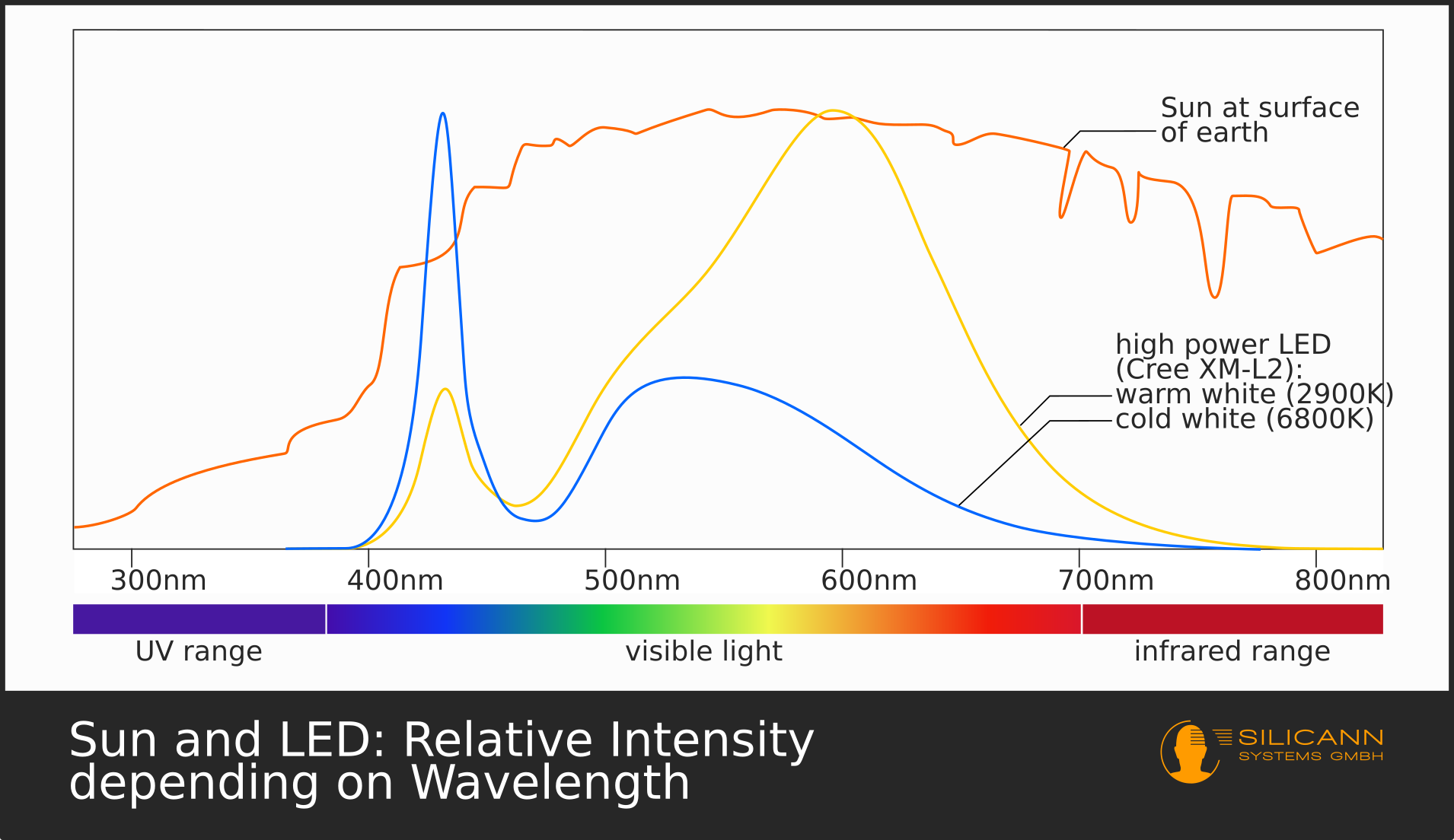
While the radiation between 400 and around 700nm taken together appears as a uniform white to us humans (i.e. the individual wavelengths are not visible to us), the sensors of our eyes definitely perceive differences. There are photoreceptors that only react to light-dark differences, but also receptors that recognize very specific wavelengths. The photoreceptors of the retina are called rods and cones. They are proteins that are embedded in the back of the eye and transmit signals to the brain when activated, which turns biochemical processes on or off. Depending on which of these receptors are activated, gene expression, hormone status or the sleep-wake rhythm of humans change.
The rods all contain the same photo pigment - rhodopsin. These photoreceptors are increasingly active at dusk and in the dark, while the rods are not responsible for sharp vision during the day and for differentiating the colors. There are three types of cones, all of which have a different protein content (opsin) in the visual pigment. All opsins are G-protein coupled receptors (GPCRs) that initiate signal transmission in the cell when activated. The opsins of the cones, which lead to a color sensation, are summarized under the generic term photopsins. They are referred to as L-, M- or S cones (or opsines), depending on whether they react to long-wave light (L, 580nm), medium wavelengths (M, 530nm) or short-wave light (S, 420nm). The wavelength that strikes the retina and is registered by the sensors determines which biochemical activation processes are started.
Melanopsin (480nm), discovered in the 1990s, is located in the retinal ganglion cells and is used to transmit information about the ambient brightness. Activation of this protein affects the circadian rhythm and melatonin production. The wavelength sensitivity of melanopsin shows that the proteins are activated precisely by the amount of light that is relatively weak in the evening, but is emitted by LED screens regardless of the time of day.
Biological effects of blue light
Light - regardless of whether it is daylight or artificial light - has a potential influence on the sleep-wake-cycle of humans. Brightness or darkness influences the "internal clock" or circadian rhythm. This watch is located in the pineal gland (or epiphysis) in the brain. Here a hormone is produced from serotonin -the so-called melatonin. The synthesis is carried out in two steps by two different enzymes, the activity of the first enzyme being light-regulated. As soon as it gets dark, the secretion of melatonin increases, while brightness inhibits the release. The distribution is particularly inhibited if the proportion of blue light is high. It is precisely this light that activates the melanopsin in the retina, which triggers a signal cascade that puts the brain in a state of attention.
Those who surround themselves with blue light during the day activate their brains, increase attention and memory, and also promote better sleep during the night. The sunlight shifts red towards evening - in contrast to the ubiquitous screens. The assumption is therefore that people with difficulty falling asleep in the evening should reduce the exposure to blue light, otherweise chronic sleep disorders can develop. In contrast, light sources with low luminocity and a high proportion of red should promote sleep in the evening.
There are indications that blue light can reduce the perception of contrast and can also lead to retinal damage with long-term exposure. However, this requires light intensities that are as intense as the summer midday sun and cannot even be remotely reached by screens. A positive effect of blue light is the conversion of bilirubin in newborn icterus. Blue light is also used for therapy for some skin diseases such as psoriasis, acne or neurodermatitis. However, the eyes are protected with such treatments.
Current state of research on blue light and sleep behaviour
Millions of people worldwide have trouble falling asleep or have trouble sleeping. Young people and adults between the ages of 15 and 65 are particularly badly affected. Sleep disorders can have various causes. They can occur at a certain stage in life or become a chronic condition. In addition to stress, heavy coffee and alcohol consumption and certain illnesses - the four main risk factors for the occurrence of sleep disorders - recent studies have shown that the interruption or shift in the natural circadian rhythm influences sleep behaviour. This was first noticed in shift workers exposed to artificial light at night. As a result of the irregular sleep-wake rhythm, serious health problems up to the increasing risk of cancer (breast cancer, colon cancer and prostate cancer) have occured. The World Health Organization (WHO) has since declared shift work as a possible carcinogen. Denmark has therefore also started to pay compensation to shift workers suffering from breast cancer.
More and more people accidentally influence the internal clock themselves. Strong lighting of the living room during the evening hours or the use of modern electronic devices with an LED screen shortly before bed are also suspected of causing a shift in the circadian rhythm. A 2014 study showed that using e-book readers before going to sleep could affect sleep behavior. The e-readers were used for four hours at a distance of 30 to 40 cm from the eyes. A control group read a printed book for the same time. The result showed a clear shift in hormone release. While the readers of the printed books - which were only exposed to the light reflected from the book pages with a peak at 612 nm - showed a normal release of melatonin, the hormone release of the e-book reader users started an hour and a half later. In addition, only about half of the melatonin was produced by the participants who used the electronic device. Other effects included a decrease in REM (rapid eye movement) sleep rates and fatigue the next morning.
A 2013 study from New York provided similar results. Here, two-hour long evening sessions on tablets were examined. The participants were divided into three groups. The first group used the tablets with the highest light intensity. The participants in the second group also used blue light-emitting glasses (470 nm, 40 lux) and the third group wore glasses that filtered any optical radiation below 525 nm from the light (control group). Melatonin levels were examined after one and two hours. In the group that used the tablets with blue light-emitting glasses, the melatonin release was significantly reduced after the first hour, while the production for tablet users without glasses (group one) only decreased significantly after the second hour (by up to 23% ).
A study from Basel confirmed that blue filters can be useful for maintaining a healthy circadian rhythm. Thirteen 15- to 17-year-old male adolescents were tested here. Participants were also given glasses, either with pure glass lenses or with lenses that block the blue light component, while using an LED screen for three hours before sleep. Here, too, it became clear that melatonin production rose significantly later and was lower overall among the participants with glasses made of pure glass.
However, most of these studies show methodological weaknesses. Almost all of them only investigate small groups of people, in short periods of time, in sometimes unrealistic experimental settings. Reading in bed for 2, 4 or even 8 hours in a study is not a very realistic test situation. Many studies are also limited to measuring the melatonin level without examining the actual sleep behavior. Although the important role of melatonin for the circadian rhythm is known, clear temporal relationships and the importance relative to other factors have not been sufficiently researched. Not least because of this the EU also points out that so far no proof of blue light effects on sleep could be shown (PDF).
The artificial light sources, whether LED or a cell phone screen, are much dimmer than the sun. On a summer day with clear skies, a brightness of around 100000lux reaches our eyes. The blue component then still corresponds to several 10000lux. For comparison: Extremely bright cell phone displays achieve a maximum of 1000 lux - in real situations (with reduced brightness and not just a white image), blue light is usually emitted below 100 lux.
Filtering of blue light components
The studies show that electronic devices such as smartphones, tablets or modern computer screens can have an impact on melatonin production at night. If you want to be on the safe side despite the undetected effect on real sleep behavior, there are a number of options available on the market. For most cell phones and tablets, there are special display foils that filter away the blue part. But be careful: there are also fraudulent offers here. We once ordered different foils to analyze their filter properties with our spectrometers. One of these films - it was not cheap - simply turned out to be a thicker form of cling film. The blue part was not filtered at all. You can discern an actually functioning blue filter film with the naked eye: blue parts are missing, formerly white areas now appear yellow. There cannot be a film that filters out blue parts without significantly influencing the image.
But there are also different ways to counter the blue light components not with foils, but with software. For most operating systems, whether cell phones or computers, there are applications that automatically reduce the blue content in the display based on the time of day. In this case, the screens simulate the changing spectrum of the setting sun within your own four walls.
Conclusion
In Germany alone, sleep disorders are a significant burden on the quality of life for millions of people. Our melatonin balance plays a major role in maintaining the circadian rhythm - our internal clock. Numerous studies were able to demonstrate the influence of the melatonin household by room lighting and sometimes also by blue lighting under laboratory conditions. Up to now, however, no effect has been demonstrated for an influence under the real conditions of our everyday life. Of course, this does not mean that there is no effect. However, if it does exist, it must necessarily be so small that it has so far been lost in statistical noise.
In contrast to filtering blue light, there are demonstrably effective methods, e.g. the establishment of strict sleep hygiene, regular exercise, behavioral therapy approaches such as meditation, autogenic training or progressive muscle relaxation or psychotherapeutic approaches such as paradoxical intention.
